The EF-type engine, Daihatsu’s renowned 3-cylinder timing belt engine for light vehicles, has almost disappeared from the market. This is unsurprising, as 19 years have passed since it was replaced by the next-generation KF-type engine, featuring a timing chain and lightweight all-aluminum construction.
While the KF engine’s production run is becoming longer than the EF’s, its early models were notorious for serious issues including oil leaks and excessive oil consumption. This led to manufacturer responses including an extended warranty (10 years or 100,000 kilometers from new registration, whichever came first) in addition to the standard warranty.
Recently, an owner of a Hijet light truck equipped with one of these early KF engines consulted me about oil drops appearing beneath their vehicle.
Model: 2009 EBD-S201P ke-VE 5MT
Mileage: 125,000km
While there might have been minor seepage before, it hadn’t progressed to actual dripping until now. Unfortunately, the vehicle has exceeded both the time limit and mileage limit of the manufacturer’s extended warranty.
The most severe oil leak was around the timing chain cover, a common issue with early KF engines, and there were also traces of oil seepage at the head gasket.
While replacing the cylinder head gasket simultaneously would have been ideal, the owner requested to address only the severe oil leak. Therefore, we limited the repair to re-sealing the timing chain cover with liquid gasket, which was relatively more affordable.
However, “limited” doesn’t mean it was a simple job.
The timing chain cover cannot be removed independently, as it requires removing the oil pan, which doubles as an engine mount bracket.
While I understand the manufacturer’s efforts to reduce part count, one of the two engine mounts is directly attached to the oil pan. Therefore, before removing the oil pan, we needed to provide alternative support (chain-suspended above the service hatch in the cargo bed).
While this type of work would be easier with the engine removed from the vehicle, the service manual specifies 5.5 hours for an in-vehicle repair.
Following instructions, we proceeded with disassembly while the engine remained mounted in the vehicle.
Once the target parts were removed, the engine’s internals were exposed.
Checking the service manual’s specifications for liquid gasket application, the timing chain cover required more sealant than the oil pan.
However, judging from the “overflow” amount of the original gasket on this engine, the timing chain cover side appeared to have less.
While the disassembly process up to this point was straightforward, the next process involved the most challenging task: cleaning off the stubborn liquid gasket.
While cleaning the removed oil pan and timing chain cover was easy enough, cleaning the engine-side mounting surfaces required painstaking removal work with the engine facing upward.
Gasket removal alone easily takes over an hour, and the new liquid gasket needs at least 3 hours to cure (we actually left it overnight). It’s puzzling how they determined the standard labor time.
This is my preferred liquid gasket, RTV silicone sealant.
RTV stands for Room Temperature Vulcanizing. For this application (aluminum mating surfaces), this oxime-cure type is suitable.
There’s a very similar “acetone-cure type” silicone sealant, and while both react with atmospheric moisture, the acetone-cure type releases acetic acid during curing, which risks metal corrosion, so it’s best avoided. It’s easy to distinguish by its vinegar-like smell.
This is a post-assembly photo. You can see the gray liquid gasket appropriately protruding from the mating surfaces. While factory production lines use automated application, maintenance work is done by hand. We must apply the manual-specified amount skillfully and join the surfaces within the specified time after application.
Uneven application results in inconsistent protrusion, making this a typical job that reveals a mechanic’s quality of work.
We completed the job after confirming no seepage during idling and test driving.
(If the video doesn’t play properly, please click here)
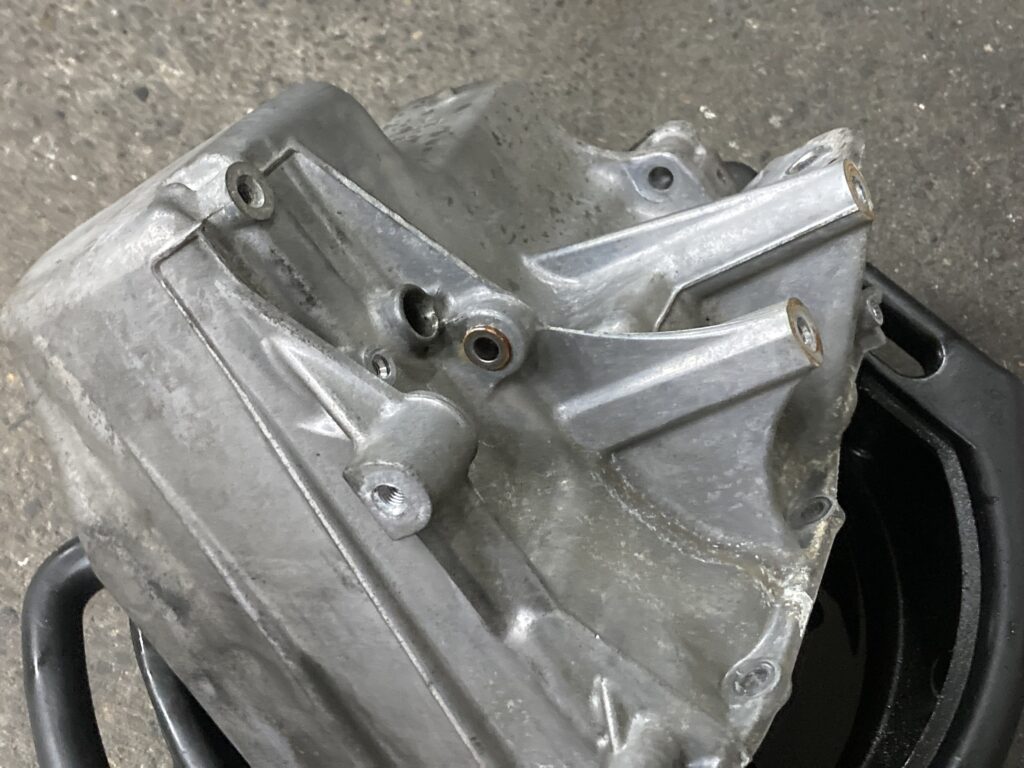

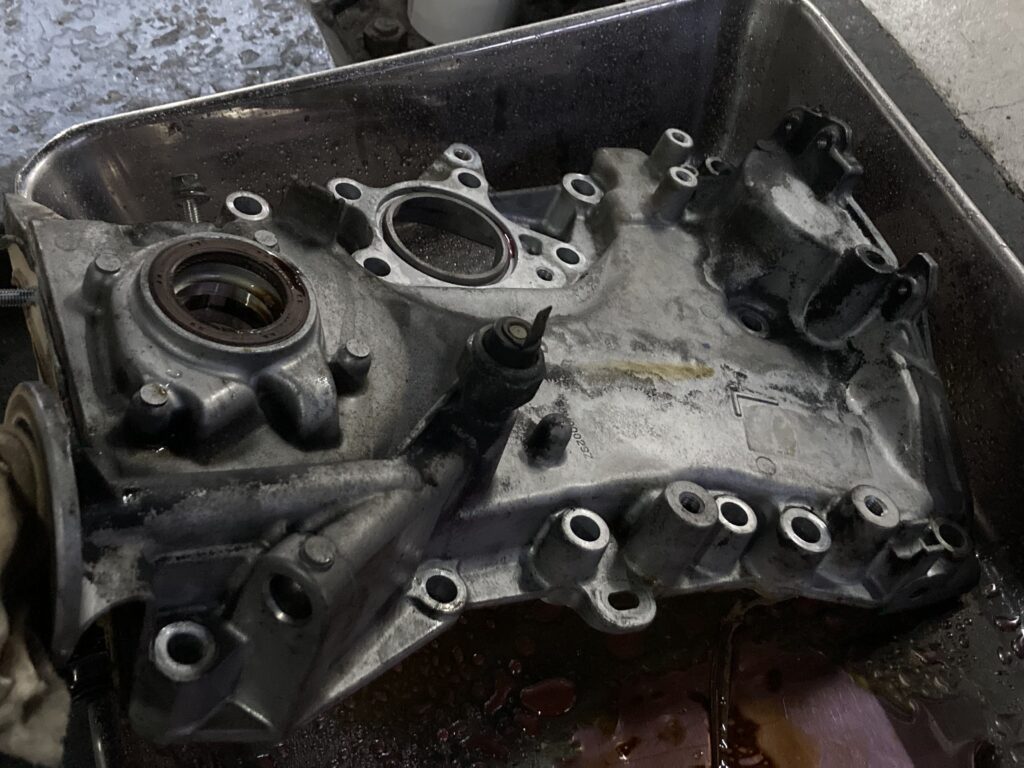
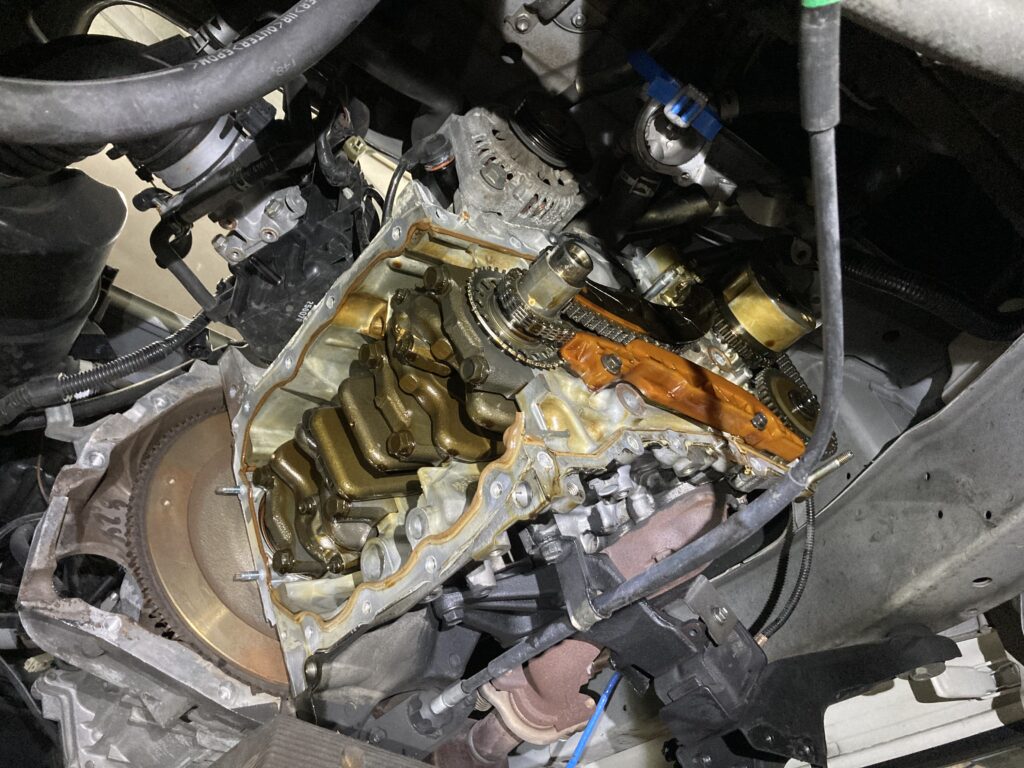
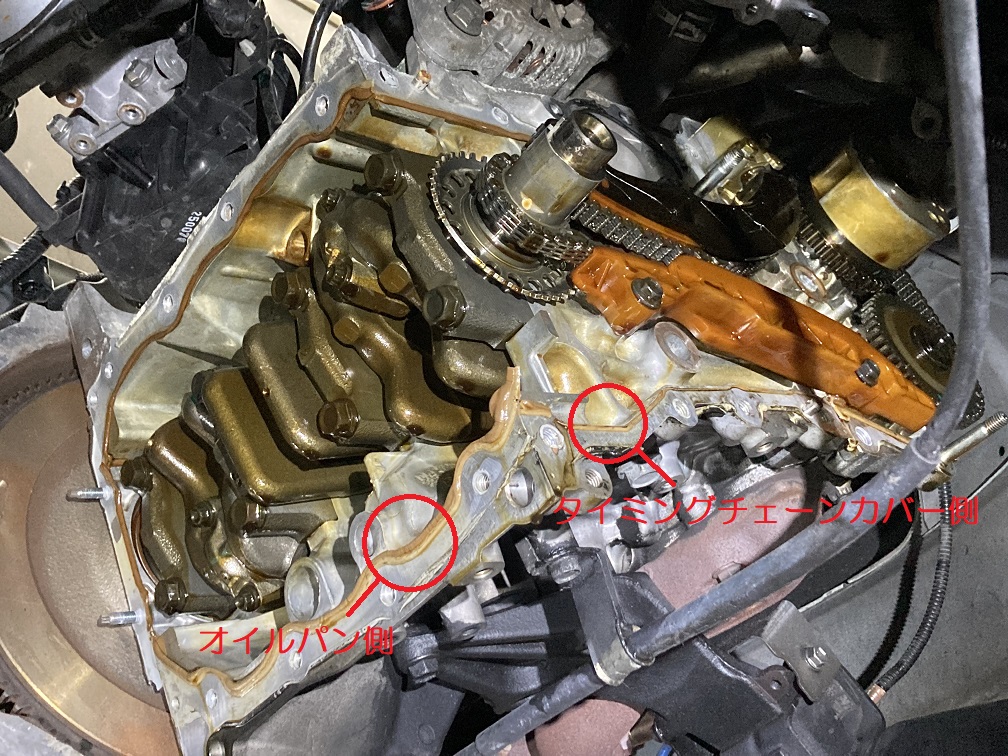
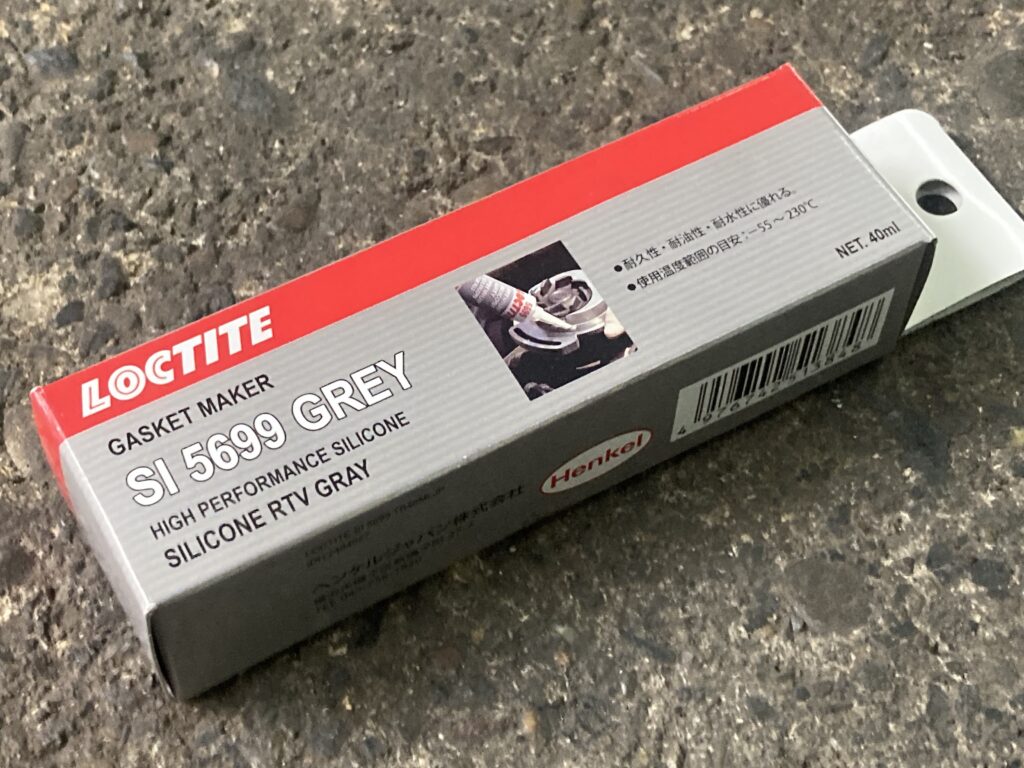
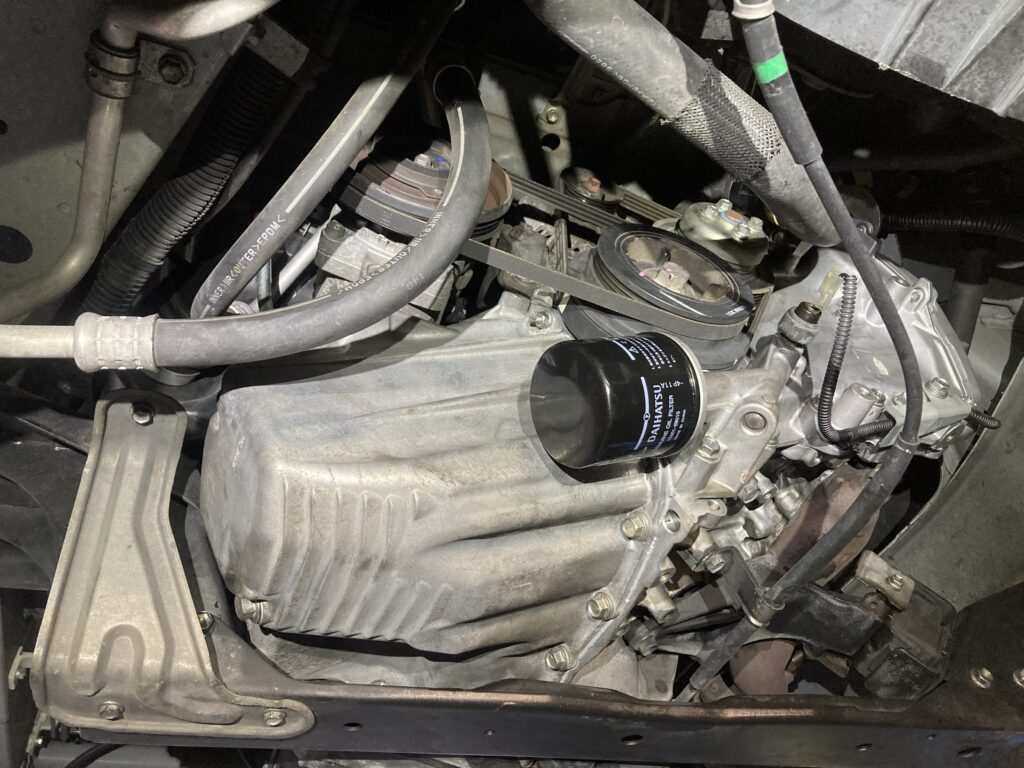
Leave a Reply